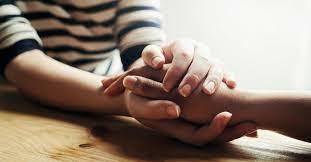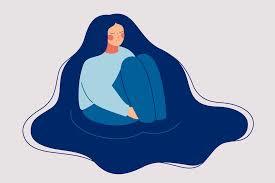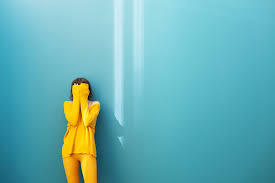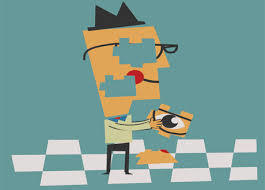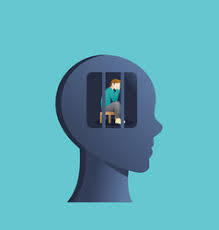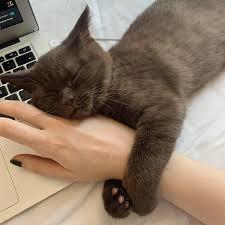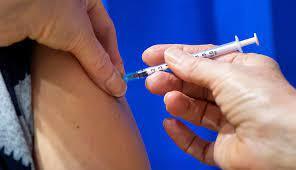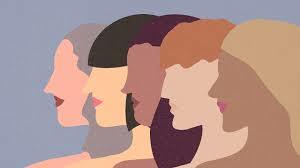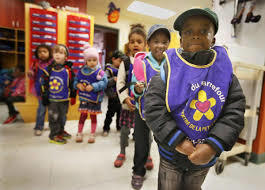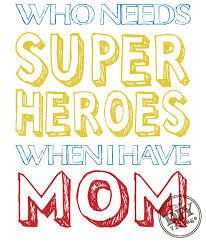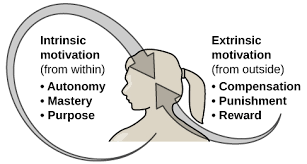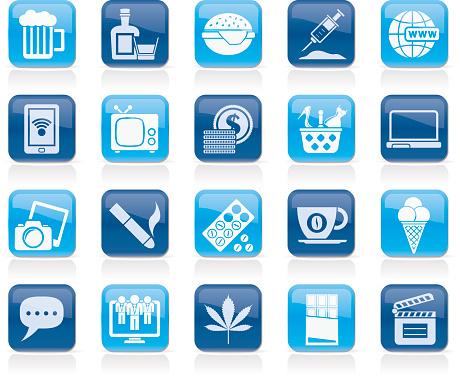Marcia Sirota's Blog, page 13
June 17, 2021
What is Ruthless Compassion?
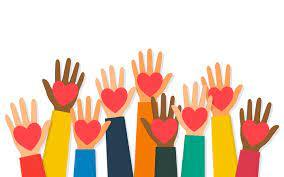 What is ruthless compassion?
What is ruthless compassion?Ruthless Compassion is a philosophy that brings together two seemingly opposite concepts: those of fierceness and loving kindness. With ruthless compassion we are fierce in the pursuit of the truth and fierce in our interactions with others, but at the same time, we’re kind and loving with ourselves and others.
Over the years, I’ve found that too many of us struggle to see the truth about our bad choices because we can’t help criticizing ourselves over the things we see. When we practice ruthless compassion, we’re able to face the truth about the choices we’ve been making without beating ourselves up.
Seeing the truth:Ruthless compassion also empowers us to see the truth about the people in our lives. We often beat ourselves up for being “stupid” over having gotten involved with hurtful people. This can prevent us from acknowledging just how hurtful they are and this denial can keep us stuck in toxic relationships.
With ruthless compassion, we can be gentle with ourselves for having gotten involved with someone hurtful. That enables us to face the truth about how bad they are and to more easily walk away from the relationship.
Ruthless compassion enables us to be more empowered in our relationships. The loving-kindness of this philosophy helps us to grow our self-esteem and to feel more entitled to good things.
No more people-pleasing:For this reason, it empowers us give up people-pleasing. Instead, we put our own self-care first, and we don’t allow others to disrespect us, mistreat us or exploit us.
Because of our tendency toward harsh self-criticism, many of us never get the chance to make better choices; to grow and evolve and be the best we can be. We miss out on the opportunity to improve our relationships and have a better life, in general.
Ruthless compassion allows us to see things with clarity, but with kindness. We can face the mistakes we’ve been making and not be too hard on ourselves. After all, the point of seeing the truth isn’t to criticize ourselves but to have the opportunity to improve.
We can face the truth about the people in our lives, even if this truth is painful or embarrassing. We can acknowledge that we’re in an abusive relationship, for example, without feeling the usual shame. Ruthless compassion helps us to understand that it’s human to make mistakes.
Dealing with our challenges, head-on:Ruthless compassion empowers us to face our challenges and deal with them, head-on. It helps us to understand what we’re doing and why, without the negative self-talk that would prevent us from evolving.
This philosophy enables us to be assertive; to speak our truth and set clear limits with others. With an attitude of fierceness, we don’t allow anyone to mess with us and we don’t enable anyone’s destructive (or self-destructive) behaviour.
For example, if our spouse is an alcoholic, it means not cleaning them up and making everything okay for them after they go on a binge. Otherwise, they never learn how bad it is for them (and us) when they’re abusing alcohol.
It means that if our sibling is being hurtful to us, we let them know that their behaviour is unacceptable. It also means having the courage to walk away from this sibling if they defensive or unreasonable in their response to our request for better treatment.
No longer tolerating hurtful behaviour:Being fierce but kind means that loving someone has nothing to do with tolerating their bad behaviour. It shows us that we’re entitled to courtesy and consideration, and if this person can’t give us these things, they don’t deserve to be in a relationship with us.
Practicing ruthless compassion means that we can be kind (thoughtful, caring, considerate) as opposed to nice (trying too hard to get others to like and approve of us).
This philosophy helps us to see that kind people won’t judge us and that the unkind ones don’t matter. We care less about what other people think about us and we take more responsibility for our own self-worth. We’re focused on being the best we can be, rather than trying to be what other people want us to be.
Accessing the “inner warrior.” Silencing the “inner critic”:With this philosophy, we can access our “inner warrior.” This is the part of ourselves that’s assertive, not aggressive. We can silence our “inner critic” and we can speak our minds, and say “no” to other people when we need to. We can set strong limits and walk away from those who refuse to treat us the way we deserve to be treated.
This philosophy helps us to be happier, because we’re taking good care of ourselves, tolerating less mistreatment, and always growing and improving.
It helps us to be more comfortable in our own skin and more easy-going with others, because we have nothing to prove and because we trust ourselves to take care of ourselves. Ruthless compassion. I highly recommend it.
___
Sign up for my free biweekly wellness newsletter here for my series on Moving into Summer with Good Self-Care, where you’ll learn simple tips for taking the best care of yourself and your loved ones this 2021 summer season.
And tune in to my ongoing YouTube video series on Coping With Covid.
June 10, 2021
How the Murder of a Family Has Traumatized a City and a Country
The murder of a Muslim family – Salman, Yumna and Talat Afzaal, and Madiha Salman, and the attempted murder of Fayez Afzaal – in London, Ontario on Sunday, June 6th was a shocking event that has left the city, and the entire country, reeling.
London, Ontario is a quaint city with a small-town feel. It is mainly home to university students and retirees. When a twenty-year old man ran down a family who were out for a Sunday-evening walk, it sent shock waves throughout the community and through the country as a whole.
It would be disingenuous to say that London, or any other Canadian city for that matter, is devoid of racism or Islamophobia, but this kind of brutal attack is an unprecedented event.
Muslims fearful of leaving the house:Since the news emerged that this was an attack specifically targeting people of the Muslim faith, many Canadians are now living in fear. A lot of people — not only Muslims — who wear traditional clothing are afraid to leave their home, for fear of another attack.
Many Londoners have been traumatized by the events in this small, close-knit community. Canadians from coast to coast are horrified and heart-broken by what has happened.
Why is this act of hatred and violence so deeply disturbing? Why is it affecting us all so deeply? I think that it relates to the fact that the murderer sought to wipe out an entire family.
Everyone has a family:Everyone comes from a family. For most of us, family is seen as our first and most consistent source of love, comfort and security. We value family above almost anything else.
In a sense, family is sacred. So, when an assailant runs down an entire family with a huge truck, it feels like more than a crime. It feels like an act of sacrilege.
What makes it all the more chilling is that since the beginning of the COVID restrictions, everyone has taken up walking. It’s one of the few activities these days that a family can share.
Everyone across the country can relate to the idea of going for a walk with their loved ones, so when this innocent ritual shared by all Canadians is defiled by such an act of violence, we are stunned and appalled.
Everyone can empathize with the members of this family who were savagely mowed down on a Sunday evening while out for a pleasant stroll. This family was made up of a mother, a father, two children and a grandmother. Because it feels so close to our hearts, we’re left traumatized by what happened to them.
Trauma — the result of horrific experiences:Trauma occurs when we experience events that are life-threatening or when we witness horrific events. Londoners and Canada as a whole are bearing witness to the events of Sunday night and it is traumatizing for us all.
Symptoms of trauma include fear, anger, insomnia, nightmares, numbness, confusion, agitation, social withdrawal, crying spells, irritability and anguish. We can feel some or all of these things.
In an article from the London Free Press, Greg Tilford, a neighbour of the Afzaal’s, is quoted as saying that he had seen Mr. Afzaal and his young son, Fayez, in front of their home on the day before the attack. Mr. Tilford said that when he learned about what happened, “I just went there, sat on the ground and bawled.”
A longtime family friend, Saboor Khan, was quoted as saying that, “I walk with my family on the same route, too… Just imagining them struggling for life, it is so inhumane. I struggle for words.”
Trauma is a debilitating experience and people who are severely affected should not hesitate to seek out help in the form of counseling and/or medical treatment. The CBC has provided a list of resources here for people who are struggling with trauma.
I have spent the better part of twenty-five years helping people recover from trauma, and there are two conclusions I’ve come to. One, is that trauma can profoundly and adversely affect us. Two, is that it can be treated, and the sooner we get to it, the better off we’ll be.
How to heal trauma:If people are feeling like it’s all too much for them to deal with, right now, they should seek out help wherever they can find it. Whether it’s talking to a loved one, a member of the clergy, a mentor, a counselor or a coach, there is help available within the community.
And when we’ve been traumatized, we’re that much more vulnerable. Trauma makes us more sensitive to any other stress. So, we need to engage in serious self-care, including making sure that we get enough rest and sleep, so that our stressed-out brain can heal.
We need to eat healthy food and stay hydrated. We need gentle, regular exercise. We need a lot of love and support from the people we trust. We need quiet time alone to tune in to our feelings. And we need to give ourselves the time and permission to grieve.
We need to have patience with the process, as trauma can take a while to heal from. If we practice self-compassion and compassion for one-another, the healing will happen.
My heart goes out to the family and friends of the Afzaals, as well as to the community of London and to everyone who has been affected by this tragedy.
I am hoping that the horrific nature of these events will serve to galvanize our local and federal governments to enact policies that protect all Canadians from hatred and hate crimes.
I hope that real change can come from this terrible loss so that in the very near future, no-one will have to worry about going for a walk with their family on a warm Sunday evening.
___
Sign up for my free biweekly wellness newsletter here for my series on Moving into Summer with Good Self-Care, where you’ll learn simple tips for taking the best care of yourself and your loved ones this season.
And tune in to my ongoing YouTube video series on Coping With Covid.
June 4, 2021
Naomi Osaka Shows Us That Top Athletes Are Human, Too
Tennis phenomenon Naomi Osaka is the biggest name in sports these days, and it’s not just because of her prodigious talent.
According to an article on Mashable, when Ms. Osaka decided to skip a post-match press conference during the recent French Open Tournament, she was fined $15,000, despite the fact that she cited mental health reasons for opting out.
Ms. Osaka posted on Twitter that “I’ve often felt that people have no regard for athletes [sic] mental health and this rings very true whenever I see a press conference or partake in one.”
In announcing her departure from the tournament, she shared that she had “suffered long bouts of depression since the U.S. Open in 2018 and I have had a really hard time coping with that.”
Osaka met with threats for her attempts at self-care:The French Tennis Federation (FFT) was slammed as “hypocritical” for responding to Ms. Osaka’s withdrawal from the tournament with, “we remain very committed to all athletes’ well-being and to continually improving every aspect of players’ experience in our Tournament, including with the Media, like we have always strived to do.”
According to the article in Mashable, this was in “stark contrast to Sunday’s lengthy, justification-filled missive threatening Osaka’s career,” that included the following passage:
“We have advised Naomi Osaka that should she continue to ignore her media obligations during the tournament, she would be exposing herself to possible further Code of Conduct infringement consequences… and the trigger of a major offence investigation that could lead to more substantial fines and future Grand Slam suspensions.” (my italics)
It appears that it was this response that led to Ms. Osaka’s decision to withdraw from the tournament completely.
In a year when a global pandemic has threatened the mental health of millions of people, and when the Black Lives Matter and Stop Asian Hate movements are front and center, Ms. Osaka — who is both Black and Asian and a person who suffers from depression — was hit on every possible front.
In choosing not to attend the press conference, she was simply trying to engage in some basic self-care, which is a behaviour that I have repeatedly encouraged in my patients.
Osaka’s actions could very well save lives:Sean Gregory, writing for Time.com, posted an article saying that Ms. Osaka’s actions will be life-saving to other athletes who have been suffering from mental health issues.
The article quoted Olympic champion, Michael Phelps, as saying that “I felt very happy after reading her message because she’s showing that vulnerability, she’s showing a side of her that we haven’t seen before, and that’s so powerful… It’s definitely going to be a game-changer in mental health moving forward.”
The Time article described how lately, athletes like Phelps have been trying to shed light on the problem of mental illness and have been more open about their personal struggles.
Gregory quoted therapist, Lisa Bonta Sumii, who found it “groundbreaking” that Ms Osaka “has prioritized her mental health. And has said so,” and Ms. Sumii called Osaka’s decision to speak out, “a great example.”
The Time article goes on to address the myth that successful athletes should all be happy, noting that mental health struggles are not uncommon, even in top athletes.
The problem, as I see it, is that the world has little compassion for elite athletes who suffer from mental health problems. The expectation is that mastery, wealth and fame should preclude anxiety or depression, but of course, this is far from the truth.
Michael Phelps struggled with depression:Phelps, himself has dealt with severe depression and thoughts of suicide, even after winning his pile of gold medals. This is only one example of how mental illness can’t be staved off by external success. In fact, the pressures of being a sports celebrity could even increase one’s susceptibility to mental health issues.
In a recent New York Times article, Alan Blinder discussed how until very recently, it hasn’t been safe for athletes to come forward and discuss their mental health issues.
Blinder quoted Matthew Smith, a professor of health history at the University of Strathclyde, in Glasgow, who stated that, “historically, athletes have been reluctant to talk about their mental health, not least because it could be used against them.”
Ms. Osaka’s bravery in sharing her own mental health issues has the potential to help other athletes who are suffering. It can empower them to acknowledge, both to themselves and to the world, that they too are struggling.
Elite athletes are put on pedestals by their fans across the world. They’re seen as perfect physical specimens, impervious to the problems that we inferior beings might face. But in many ways, for all their seeming superiority, these athletes are often treated like objects by their trainers and sports organizations.
They’re often pushed to their limits and beyond, and always expected to perform at peak level despite injury, ill health, or psychological distress.
As a psychiatrist in practice for over twenty years, I find it terribly sad that these extremely hard-working athletes who sacrifice so much to perform so brilliantly are rarely permitted to have moments of fear, vulnerability or weakness.
I promote a philosophy “Ruthless Compassion.” The compassion piece enables us to acknowledge the truth about our struggles, while the ruthless piece empowers us to stand up for ourselves and take care of ourselves, even when others pressure us not to do so.
By facing her truth and setting limits on what she’s willing, and not willing to do, Ms. Osaka is an excellent example of Ruthless Compassion in action.
Top athletes are human, too. They might be more physically talented and they might be willing to work harder than many of us, but that doesn’t make them super-human.
As Naomi Osaka clearly demonstrated just the other day, they can sometimes be fragile, and these are the times when they most need our understanding and support.
Top athletes shouldn’t be condemned or punished for choosing to prioritize their mental well-being. In fact, this type of behaviour should be celebrated and emulated, both by athletes and by non-athletes, alike.
___
Sign up for my free biweekly wellness newsletter here for my series on Moving into Summer with Good Self-Care, where you’ll learn simple tips for taking the best care of yourself and your loved ones this season.
And tune in to my ongoing YouTube video series on Coping With Covid.
May 29, 2021
What Will Our Social Interactions Be Like, Post-Pandemic?
 Introverts have had it easier during lock-down:
Introverts have had it easier during lock-down:As an introvert, the social isolation hasn’t been as hard on me as it might have been on others. My personal trainer is a true extrovert and for her, the isolation was oppressive. She had to get really creative in order to survive the lock-downs. We’ve had our sessions on FaceTime this past year, and that’s worked well for us.
I was thinking about some of my patients who make me look like a social butterfly. These are individuals who have difficulties interacting with other people at the best of times. A few of them told me that the lock downs were a relief, because they didn’t have the pressure of having to try to relate to others.
As much of a relief it might have been for the socially awkward, I’m not sure the isolation has done them any good. Any muscle that we don’t use will begin to atrophy.
Extroverts have been withdrawing in despair:Even some extroverts in my therapy practice have told me that they’ve become so despondent after months of lock-down that they’ve started withdrawing socially. One person told me that he felt he had nothing to say and that he preferred to just be quiet. That can’t be a good thing when being with other people is what recharges your batteries.
Even though I’m an introvert, I need my small group of loved ones and I’ve made an effort to keep in touch with everyone over the past several months. It’s not the same as being face-to-face but it’s a lot better than no contact at all.
But what about the people who haven’t been working so hard to keep their relationships fresh over the past several months? How will things be for them when the restrictions have lifted and life returns to more-or-less normal?
Zoom meetings don’t demand the same degree of presence as face-to-face meetings do. Many of us can check out in a zoom meeting. We can mute ourselves or even turn off the video. We can avoid the social interactions that are made more challenging by the technology.
Are we going to be more socially awkward, post-pandemic?When we return to in-person relationships will many of us be socially awkward after so many months of not exercising our social skills muscle? Maybe, and that’s why it’s important to take advantage of every opportunity to connect, whether it’s socially distanced walks or backyard visit, or having regular and meaningful conversations with loved ones.
Social awkwardness is the potential downside to months of pandemic-enforced isolation. There is an upside, however. After over a year of not seeing many people in-person, we have an opportunity to rethink the way we interact with them, moving forward.
If you used to be an irritable, impatient person, perhaps you’ve had some time to reflect on how this way of interacting might not be working for you.
If you’re a supervisor who was prone to micro-managing, and you’ve seen that productivity has actually increased lately, it might be time to re-think your managerial style.
If you’re a former people-pleaser who was becoming exhausted by the constant efforts to make everyone around you happy, whether in your personal life or at work, perhaps this past year has shown you what a relief it is not to have to try so hard. Maybe you’ll want to try just being yourself, post-pandemic.
An opportunity for self-reinvention:The social isolation has provided us with a unique opportunity to reinvent ourselves. We can be more conscious and deliberate about how we return to our personal and professional relationships, once the lock downs have been lifted. We can try on a social persona that is potentially a lot more successful and fulfilling.
Every time we step away from a relationship, we have a chance to rethink things and come back with a fresh perspective. After over fourteen months of social isolation, we’re empowered to consider the person who we used to be, socially, and to decide if this is the person we want to be, moving forward.
Freedom from social traps:Sometimes we get stuck in social roles and social ruts. These can be like prisons, trapping us in patterns of interaction that don’t make anyone happy; especially not ourselves. The advantage of so many months of isolation is that we’re now free from these traps.
We can go back to our relationships, both personal and professional, and interact in ways that work better for everyone. As painful and lonely as it has been because of the lock down, the silver lining is that we have a chance to start over, to start fresh.
Now that things are opening up, it’s the perfect time to reflect on your personal and professional relationships. Were they working for you or is it time for a change? Take advantage of the pandemic-provided reboot so that you can be an even better version of yourself in your relationship in the post-pandemic world.
____
Sign up for my free biweekly wellness newsletter here for my series on Moving into Spring with Good Self-Care, where you’ll learn simple tips for taking the best care of yourself and your loved ones this season.
And tune in to my ongoing YouTube video series on Coping With Covid.
May 16, 2021
How Caring For My Sick Cat During COVID Made Me a Better Person
On May 10th I said good-bye to my beloved cat Sweetface. She was only twelve years old, but she had been diagnosed with an aggressive form of cancer in March 2020, just when the lock-down began.
I spent fourteen months caring for Sweetface, worrying about her, and dreading the day when she’d be gone. Now, I’m grieving her loss and looking back on the experience.
The lock-down changed everything. I went from working in my downstairs office all day to spending all my time upstairs. Sweetface, who’d been used to seeing me for brief moments during the day, quickly became accustomed to having me around all the time.
It got so that if I went out even for a short while, she’d run up to me when I got back home, meowing accusingly, as if to say, “Where have you been? Why did you leave me?” I always gave her a good cuddle, happy to home again and able to spend as much time as possible with her, during her last months.
During the Covid-19 pandemic, people have turned to their pets for comfort and companionship more than ever. With the social distancing brought about by repeated lock-downs, having a pet could mean the difference between tolerable isolation and agonizing loneliness.
Multiple studies have shown that having a pet is good for our health. They help us, physically and cognitively. During the pandemic, having pets can boost immunity and decrease our risk for anxiety and depression.
I’ve appreciated my pets these past fourteen months, especially my Sweetface, who was a remarkable animal. I’ve been doing cat rescue work for over fifteen years and Sweetface was one of a kind.
I hadn’t planned on taking in any of the cats I had been caring for outside, but in 2010, Sweetface took a liking to me and decided that we had to be friends. First, she started cuddling with me on my porch steps. Then, in 2011, she walked right into the house.
Once I saw that she got along with Beny, my Yorkie, we were good to go. Sweetface amazed me in the way she bonded with Beny. They became fast friends, and that friendship never wavered until Beny passed away in 2015 at age 14.
Six months after I lost Beny, on Valentine’s day, 2016, I found a tiny cat named Pixie curled up on my front porch. She was freezing and badly injured from a fight. She’d been a pet – indicated by her pink collar and name tag – but the phone numbers on her tag and microchip were no longer in service.
I nursed her back to health and when I saw how she and Sweetface were bonding, it was clear that Pixie had to stay. Ever since then, the two of them were the best of friends, always curling up together, grooming one-another and eating side-by-side.
I worried about how Pixie would react, once her best friend was gone, but she seemed to know how sick Sweetface was. They’d been spending a lot more time together in the weeks prior to her loss. So far, Pixie is doing okay and of course, she’s getting lots of extra TLC.
Sweetface was an unusual cat. Whereas my other cats would stroll casually through the house, she would run into the room when I was doing morning yoga, as if to say, “Oh, there you are!” She would cuddle and kiss me and walk all over me as I did my different postures. Who needs goat yoga when you’ve got a cat like Sweetface?
When I was writing, Sweetface would lie next to me, or she’d come and walk across my keyboard, reminding me to pay attention to her and not just the monitor. She was a source of endless amusement.
On March 16th, 2021, Sweetface’s chest X-ray showed that her lungs were full of cancer. The vet couldn’t believe how she was still breathing. I was prepared for the worst, but my darling held out for six more weeks.
I was devastated by the news, and I didn’t know how I’d cope. I reached out to a long-time mentor who suggested that I put aside my own feelings for the time being, and focus on making Sweetface happy. I’d have plenty of time to be sad, once she was gone.
I internalized that wise advice and Sweetface’s last six weeks were filled with joy. She was petted and pampered, and I kept a smile on my face the whole time. Sweetface was happy, right up until the end.
I dreaded having to say good-bye, but her welfare came before my needs. The weekend before she had to be put down, her breathing was becoming more and more strained. The vet had said that things could take a turn for the worse at any moment, and there was no way I’d wait and risk my beloved going into respiratory distress.
The vet came to the house on Monday morning, May 10th. Sweetface sat on my bed, purring contentedly in a patch of sunlight – just the way she liked it. I sang to her and petted her and the end, although heartbreaking, was loving and peaceful.
Over the past fourteen months I learned that giving and receiving love is the best thing in life and that it doesn’t matter if it’s with a person or a pet. I learned that it’s easy to temporarily put aside my own feelings when someone else’s needs are more important.
Pets love unconditionally. They love us when we’re grumpy and when we’re petty; when we’re indulging in our worst habits and when we don’t know how to love ourselves. Pets love enthusiastically and without restraint. Sweetface would purr this high-pitched, ecstatic purr when we cuddled and she was in her bliss.
Unconditional love is a rare gift. It’s straightforward and uncomplicated. It can elicit the very best in us so that we can be the highest versions of ourselves. It enables us to rise to the occasion, doing what’s best for the ones we love, regardless of our own desires.
Caring for Sweetface in her last days showed me the value of unconditional pet-love and how I could be the best version of myself, for her. As grief-stricken as I feel right now, there’s also a sense of peace, because I know that I did everything possible for her over the past fourteen months, and that it was all inspired by the love we shared.
__
Sign up for my free biweekly wellness newsletter here for my series on Moving into Spring with Good Self-Care, where you’ll learn simple tips for taking the best care of yourself and your loved ones this season.
And tune in to my ongoing YouTube video series on Coping With Covid.
May 14, 2021
‘Celebrate moms in a way that’s meaningful’: Mother’s Day extra important amid COVID-19, expert says
Dr. Sirota was quoted in a Mother’s Day story by Global News. For more click here.
Published May 7, 2021
May 8, 2021
As Beach Weather Approaches, Magical Thinking Becomes as Dangerous as Covid-19
 We want normal but things aren’t normal yet:
We want normal but things aren’t normal yet:It’s fourteen months into the Covid-19 pandemic, and many of us are desperate for a return to some type of normalcy. We want to get back to our old routines, spending time with friends and family and enjoying the leisure activities we used to take for granted.
With the weather warming up, one concern is that many people will be heading to the beaches all across the province, regardless of what region they live in, and that they’ll be acting as though things were back to normal – even while we’re in the middle of a devastating third wave.
There’s a psychological defense mechanism that some people fall into when they just can’t tolerate the reality they’re confronted with.
Magical thinking:It’s called, “magical thinking,” and what it means is that these people will see only what they want to see, rather than what’s actually there. They refuse to accept how things are, and insist that things are how they would wish them to be.
Over the past fourteen months it seems as though a lot of people have been engaging in this type of denial. They refuse to wear masks, asserting that masks aren’t necessary, but only because, deep-down, they hate the idea of having to do so.
They refuse to socially distance, saying that Covid-19 is “just like the flu,” because they can’t stand the idea of giving up their social interactions.
And they refuse to quarantine when they’ve traveled, insisting that it’s not necessary, but only because they can’t bear the idea of spending fourteen days indoors, alone.
These people ignore the science, deny the news reports, and refute the medical professionals, all of whom are sharing the painful but necessary facts with us, every hour of every day.
The refusal to accept an unpleasant truth can be unrelenting in those with poor coping strategies for stress, and in them, magical thinking can be so entrenched that it verges on the delusional.
The definition of a delusion is “a false, fixed idea,” and it’s an indication of psychosis – in other words, a loss of contact with reality.
People who harbour delusions insist on a falsehood being the truth and they refuse to consider any other possibility. During this pandemic, some people have been so powerfully invested in seeing only their version of things that it’s as if they too, have lost touch with reality.
Magical thinking – potentially deadly during a pandemic:Tragically, thousands of people have become sick, have lost loved ones, or have died because of their magical thinking around Covid-19.
This past year, I’ve read too many heartbreaking stories about people who lost a parent or a spouse because they saw no harm in holding a family party, or about young people in their thirties or forties who realized, on their deathbed, that Covid-19 is real, and it’s deadly.
Magical thinking can be extremely dangerous, most especially with regard to Covid-19. We admit people to psychiatric hospitals when their delusions become life-threatening, but people with magical thinking that could lead to sickness and death from Covid-19 might get a ticket, at worst. Funny, how that works.
Ontario beaches – local treasures or super-spreader sites?The beaches in Ontario are one of this province’s most valued treasures. After a long, cold winter, time at the beach is good for body, mind and soul.
However, in the middle of Ontario’s third, and most deadly wave of a global pandemic, a day at the beach could become a super-spreader event, causing untold illness and even death, if people are engaging in magical thinking.
As the weather warms up and the beaches start to open, we need to be firmly grounded in the reality of our current situation. It’s the only way to keep ourselves, our loved ones, and our communities safe.
Local officials say, “Don’t come to our beaches!”The London Free Press posted an article on April 17th in which local officials are quoted as saying that while the beaches will be opening this year, they’re hoping that people will stay in their regions and not come and cause dangerous crowding.
A recent article on blogTO describes how Toronto officials plan to crack down much harder this year on any public health violations at the local beaches, in an attempt to minimize the risk of people becoming infected with Covid-19.
Letting go of magical thinking is a necessity right now, because as the weather warms up, we’ll be that much more tempted to socialize, and some will be tempted to do so irresponsibly.
One shot or two?
Some people want to believe that having one dose of a two-shot vaccine is enough to keep them safe, but the reality is that with the dangerous variants running rampant, one shot does not provide adequate protection, especially if we’re hanging out with no masks on a crowded Ontario beach.
Denial is dangerous, and never more so than now. Living in a fantasy of our own making – in which following the Covid-19-related public health guidelines isn’t necessary – has been shown, over and over, to be a fatal mistake.
As much as you’re dying to go to the beach and have fun right now, you don’t want to literally die from going to the beach and having fun.
Right now, it’s imperative that you plant your feet firmly in the ground of reality before planting your umbrella in the sand of the beach, and that you continue to follow all the public health guidelines.
Enjoy the warming weather, and take advantage of the natural delights this province has to offer, but remember that there’s no place for magical thinking in the middle of this third wave, when the stakes are literally, life or death.
Sign up for my free biweekly wellness newsletter here for my series on Moving into Spring with Good Self-Care, where you’ll learn simple tips for taking the best care of yourself and your loved ones this season.
And tune in to my ongoing YouTube video series on Coping With Covid.
As Beach Weather Approaches, Magical Thinking is as Dangerous as Covid-19
 We want normal but things aren’t normal yet:
We want normal but things aren’t normal yet:It’s fourteen months into the Covid-19 pandemic, and many of us are desperate for a return to some type of normalcy.
With the weather warming up, one concern is that many people will be heading to the beach all across the province, regardless of what region they live in, and that they’ll be acting as though things were back to normal – even while we’re in the middle of a devastating third wave.
There’s a psychological defense mechanism that some people fall into when they have difficulty tolerating the reality they’re confronted with.
Magical thinking:It’s called, “magical thinking,” and it means that these people will see only what they want to see, rather than what’s actually there. They refuse to accept how things are, and insist that things are how they wish them to be.
Over the past fourteen months it seems as though a lot of people have been engaging in this type of denial. They refuse to wear masks, asserting that masks aren’t necessary, but only because, deep-down, they hate the idea of having to do so.
They refuse to socially distance, saying that Covid-19 is “just like the flu,” because they can’t stand the idea of giving up their social interactions.
And they refuse to quarantine when they’ve traveled, insisting that it’s not necessary, but only because they can’t bear the idea of spending fourteen days alone, indoors.
These people ignore the science, deny the news reports, and refute the medical professionals, all of whom are sharing the painful but necessary facts with us, every hour of every day.
Magical thinking can be so entrenched that it verges on the delusional. The definition of a delusion is “a false, fixed idea,” and it’s an indication of psychosis – in other words, a loss of contact with reality.
People who harbour delusions insist on a falsehood being the truth and they refuse to consider any other possibility. During this pandemic, some people have been so powerfully invested in denying the truth and seeing only their version of things that it’s as if they too, have lost touch with reality.
Magical thinking can be deadly during the pandemic:
Tragically, thousands of people have become sick, have lost loved ones, or have died because of their magical thinking around Covid-19.
This past year, I’ve read too many heartbreaking stories about people who lost a parent or a spouse because they saw no harm in holding a family party, or about young people in their thirties or forties who realized, on their deathbed, that Covid-19 is real, and it’s deadly.
Magical thinking can be extremely dangerous, most especially with regard to Covid-19. We admit people to psychiatric hospitals when their delusions become life-threatening, but people with magical thinking that could lead to sickness and death from Covid-19 might get a ticket, at worst. Funny, how that works.
Ontario beaches – local treasure or potential super-spreader sites?The beaches in Ontario are one of this province’s most valued treasures. After a long, cold winter, time at the beach is good for body, mind and soul.
However, in the middle of Ontario’s third, and most deadly wave of a global pandemic, a day at the beach could become a super-spreader event, causing untold illness and even death, if people are engaging in magical thinking.
As the weather warms up and the beaches start to open, we need to be firmly grounded in the reality of our current situation. It’s the only way to keep ourselves, our loved ones, and our communities safe.
Local officials say, “Don’t come to our beaches!”The London Free Press posted an article on April 17th in which local officials are quoted as saying that while the beaches will be opening this year, they’re hoping that people will stay in their regions and not come and cause dangerous crowding.
A recent article on blogTO describes how Toronto officials plan to crack down much harder this year on any public health violations at the local beaches, in an attempt to minimize the risk of people becoming infected with Covid-19.
Letting go of magical thinking is a necessity right now, because as the weather warms up, we’ll be that much more tempted to socialize, and some will be tempted to do so irresponsibly.
One shot or two?
Some people want to believe that having one dose of a two-shot vaccine is enough to keep them safe, but the reality is that with the dangerous variants running rampant, one shot does not provide adequate protection, especially if we’re hanging out with no masks on a crowded Ontario beach.
Denial is dangerous, and never more so than now. Living in a fantasy of our own making – in which following the Covid-19-related public health guidelines isn’t necessary – has been shown, over and over, to be a fatal mistake.
As much as you’re dying to go to the beach and have fun right now, you don’t want to literally die from going to the beach and having fun.
Plant your feet firmly in the ground of reality before planting your umbrella in the sand of the beach, and continue to follow all the public health guidelines.
Enjoy the warming weather, and take advantage of the natural delights this province has to offer, but there’s no place for magical thinking in the middle of this third wave, when the stakes are literally, life or death.
Sign up for my free biweekly wellness newsletter here for my series on Moving into Spring with Good Self-Care, where you’ll learn simple tips for taking the best care of yourself and your loved ones this season.
And tune in to my ongoing YouTube video series on Coping With Covid.
May 1, 2021
It’s Mother’s Day, and the Pandemic has Hit Moms the Hardest
 Honoring your Mom means understanding her predicament:
Honoring your Mom means understanding her predicament:Mother’s Day 2021 is on May 9th, and as the day approaches, I’m thinking about all the moms out there who have sacrificed so much for their children — more so than ever during the COVID-19 pandemic.
The pandemic has been hard on almost everyone. Ordinary people have lost their jobs, their savings and worst of all – their loved ones. Racialized communities and the poor have been the hardest hit, but of all the groups adversely affected by the pandemic, women, and especially mothers, have fared the worst.
Mothers are the hardest hit, during the pandemic:
In an article by BBC Worklife, the author, Christine Ro, describes how the pandemic lock-down has specifically affected the sectors that women tend to work in, and therefore it has led to more job losses among women than among men. She adds that women who are caregivers are especially affected by employment cutbacks. Mothers with young children and those without any family support have had it the worst during the pandemic, Ms. Ro writes.
Moms are used to making sacrifices, and having to give up their job or career, either because of the lockdown, or because they have to stay home to help their children with school, is just another sacrifice they willingly make. But that’s not to say that the stress doesn’t add up. I’ve heard some mothers say that they feel like they’ve lost their identity during the pandemic, because they have no job and no sense of their own purpose. Some mothers are turning to alcohol, to self-soothe.
Even career women aren’t spared:
Ms. Ro writes that even career women are not exempt from the COVID-induced stress, as their attempts to balance high-power careers and caring for their families are leading to burn-out and often, the decision to leave the workforce. And some of these women won’t be returning, either.
An article by McKinsey and Company discusses how women are “more vulnerable to COVID-19-related economic effects because of existing gender inequalities,” and it suggests that “what is good for gender equality is good for the economy, and society as well. The COVID-19 pandemic puts that truth into stark reality.”
The “she-cession” is real:
An article in the Financial Post, by Armine Yalnizyan, states that “the she-cession is real and a problem for everyone.” Ms Yalnizyan goes on to say that “there will be no recovery without a she-covery and no she-covery without childcare.”
Ms. Yalnizyan dubbed the COVID-induced recession a “she-cession” in March 2020. She described how, in Canada, “women lost 62% of the jobs” that had been shut down at the start of the pandemic, and these jobs were “almost all in the service sector.”
The lack of affordable child-care a determining factor:
She added that, now, it’s getting that much harder for women to return to the workforce, “as childcare spaces become rarer.” She described how, in September 2020, “54,000 men joined the labour market, while 57,000 women left it.” She remarked that “this is the first time in decades that we’ve seen such gendered differences.”
From the lack of available, affordable childcare and the necessity of being home with their young children; from the loss of service-sector jobs and the burn-out from trying to “do it all,” mothers are suffering disproportionately during the pandemic.
The best Mother’s Day gift – lobby the Government for more support to moms:
This Mother’s Day, instead of buying your Mom flowers or a gift she doesn’t need, consider the sacrifices she’s making, and think about lobbying your government for more support to women and to moms in particular.
Ms Yalnizian writes that “in places like Toronto,” September 2020’s “enrolment in regulated childcare was 37 per cent of pre-pandemic levels due to the reluctance of parents to expose their children to contagion and of workers to risk illness in return for getting paid less than a zookeeper.”
She adds that, “if over half our roads and bridges were at risk of collapsing, governments would have a plan. But when it comes to childcare’s role as essential social infrastructure, there’s nothing. The macroeconomic result is a stalling or even reversing recovery, as purchasing power gets pinched.”
Moms contribute greatly to the economy:She sums up by saying that “household spending fueled 57 per cent of GDP prior to the pandemic. Households with kids are the largest block of spenders, accounting for ; and women contribute 42 per cent of the incomes of these households.”
She says that “only a minority of workers can work from home (, according to Statistics Canada) and now even some of those people are starting to throw in the towel” after so many “months of juggling paid work and full-time but unpaid childcare and home-schooling. The people most likely to “quit” this untenable — but utterly fixable — situation are women.”
Mothers – the unsung heroes of the pandemic:
Mothers are the unsung heroes of the pandemic. The sacrifices they’re making go way above and beyond what is reasonable to expect. They’re suffering, and the mental and physical toll on them will remain, long after the pandemic is over.
Governments need to do something, and soon, as it is in the best interest of women — and society — to support mothers and make it possible for moms everywhere to be an integral part of the workforce, if that’s what they want and need.
__
Sign up for my free biweekly wellness newsletter here for my series on Moving into Spring with Good Self-Care, where you’ll learn simple tips for taking the best care of yourself and your loved ones this season.
And tune in to my ongoing YouTube video series on Coping With Covid.
April 18, 2021
Suffering From Pandemic Fatigue? Here’s How to Cope:
We’re thirteen months into a global pandemic and in many parts of the world, the third wave is proving more frightening and destructive than the first two. Aside from the toll it has taken on our health, our lives, and our livelihoods, it’s wreaked havoc on our mental health. One consequence of the never-ending barrage of bad news is pandemic fatigue. It’s a very real and very challenging mental health condition that we need to address.
Recently, I read an article in Greater Good Magazine about how pandemic fatigue is making us “antisocial.” That got me thinking, because the writer, Kira M. Newman — like many non-clinicians — used the term, “antisocial,” incorrectly. What she meant to say was that pandemic fatigue is making us asocial. An excellent blurb in The Swaddle explains the difference between antisocial and asocial.
Antisocial or asocial?Essentially, antisocial behavior is destructive and goes against the norms and rules of society, whereas asocial behavior is simply a withdrawal from social contact. Once we understand this distinction between these two terms and read Ms. Newman’s article as referring to asocial behavior, it all makes sense.
Now, I want to talk about pandemic fatigue. How do you know if you have it and what do you do if you’ve got it?
 What is pandemic fatigue?
What is pandemic fatigue?I define “pandemic fatigue” as a feeling of being overwhelmed and over-loaded – like you can’t take any more of the negative things associated with the pandemic: the restrictions, the loss, the bad news, the stress.
In the Greater Good article, Ms. Newman talks about how people with pandemic fatigue are withdrawing socially, because they feel they have nothing to give, but this is only one of the many consequences of pandemic fatigue.
Another way of thinking about pandemic fatigue is to compare it to battle fatigue – something that soldiers experience in combat situations where they face intense, unrelenting stress and distress.
Stress Disorders:Today, we characterize these reactions as “stress disorders,” like the milder Adjustment Disorder, the immediate reaction of Acute Stress Disorder, or the more chronic condition of Posttraumatic Stress Disorder (PTSD).
If you’re experiencing any of these phenomena, you’re likely to have some or all of a whole constellation of symptoms. These could include anxiety, agitation, low energy and motivation, tearfulness, poor sleep, nightmares, irritability, social withdrawal, forgetfulness, poor concentration, jumpiness, changes in appetite, and poor self-care.
If you’re experiencing any of these symptoms, you could be suffering from pandemic fatigue and you could probably benefit from speaking to someone about how you’ve been feeling.
You could also really benefit from engaging in some Mindfulness meditation, doing regular outdoor exercise, eating more vegetables, cutting down on your consumption of the news and turning off the social media for a few hours, each day.
Of course, you should never blame yourself when you’re experiencing any mental health problem, but at the same time, it’s a good idea to see if there’s anything you’re doing that might be making you more likely to be experiencing some version of pandemic fatigue.
The people who are most likely to develop pandemic fatigue aren’t necessarily the front-line workers or medical professionals who are risking their lives every day to keep the economy running and to save lives. In my experience, those most susceptible to developing pandemic fatigue are those whose lives are less meaningful and purpose-driven than they could be.
The pandemic has brought into focus the way we live our lives and the way we cope with stress. Those who are more resilient and resistant to developing pandemic fatigue appear to be the people whose lives are focused on achieving goals that arise from their value systems.
Internally-driven vs. externally-driven:I’ve identified two groups of people who are experiencing the pandemic quite differently: there is the group that’s internally-driven and that’s less susceptible to developing pandemic fatigue, and the group that’s externally driven and more at risk. Let me explain.
People who are internally-driven are motivated by their ideals, their beliefs and their desire to live a meaningful life and make a contribution. They strive to excel in all their endeavors, as this brings them a sense of mastery and profound satisfaction.
These people feel the stress of the pandemic like anyone else, but their purpose-driven existence is deeply fulfilling and nurturing and it protects them from developing a stress disorder; for example, pandemic fatigue.
People who are externally driven are motivated by external goals, like wealth, beauty, fame, materialism, power and influence. they seek to accumulate more and more and they fear losing their advantages.
These individuals are exquisitely vulnerable to any stresses that challenge their goals or take away what they already have — stresses like a global pandemic.
Internally-driven people cope better with stress because they have a deep well of inner fulfillment. These people can handle the deprivations and losses of the pandemic and they’re able to defer their need for gratification because they already feel full, inside.
Externally-driven people struggle to cope with stress because they lack that deep well of inner fulfillment. They’re unable to defer gratification and so they’re more at risk of doing impulsive things in order to compensate for their growing sense of malaise brought on by the deprivations of the pandemic.
Another distinction between internally-driven and externally driven people is that the former group, when under stress, turns to highly adaptive coping strategies. They throw themselves into the things that always make them feel good: meaningful work, helping others, creativity, mastery of a skill, personal growth, and good self-care.
Distraction, stimulation, and numbing:The latter group, being externally-driven, throws itself into distraction, stimulation and/or numbing activities. They turn to substances like drugs and/or alcohol to dull the pain; they over-eat comfort foods to distract themselves from all the bad news; they over-spend or gamble to alleviate the ongoing boredom and loneliness. All of these activities are empty and unfulfilling, and many have unforeseen negative consequences, as well.
People who are coping the best with the pandemic are those who are pursuing meaning, purpose and real fulfillment. So, if you’re suffering from pandemic fatigue, one obvious answer is to shift your focus inward and consider how you can make your life more meaningful and purpose-driven, right now.
Ask yourself: what do you care about? You can put some time and energy into contributing to a good cause. That will bring you deep fulfillment and mitigate against your pandemic fatigue.
Ask yourself: what are you passionate about? you can get involved in a project that matters to you – whether it’s creative, associated with social justice, or related to physical fitness goals – and again, it will bring you deep fulfillment and lessen any potential reactions to the stress we’ve all been experiencing these days.
If you’re already mired in pandemic fatigue, you might need therapy and possibly medications as well. Stress disorders are significant conditions and can be difficult to resolve without treatment. Once a stress disorder has become entrenched, you’re unlikely to get over it on your own. That’s not your fault – it’s just the nature of the condition.
If you’re feeling like you’re on the verge of having pandemic fatigue, try shifting your focus inward and it’s likely that you’’ avert the worst. These are challenging times, and it can be very helpful to know what you can do to protect yourself from the scourge of pandemic fatigue.
___
Sign up for my free biweekly wellness newsletter here for my series on Moving into Spring with Good Self-Care, where you’ll learn simple tips for taking the best care of yourself and your loved ones this season.
And tune in to my ongoing YouTube video series on Coping With Covid.
Marcia Sirota's Blog
- Marcia Sirota's profile
- 1 follower


